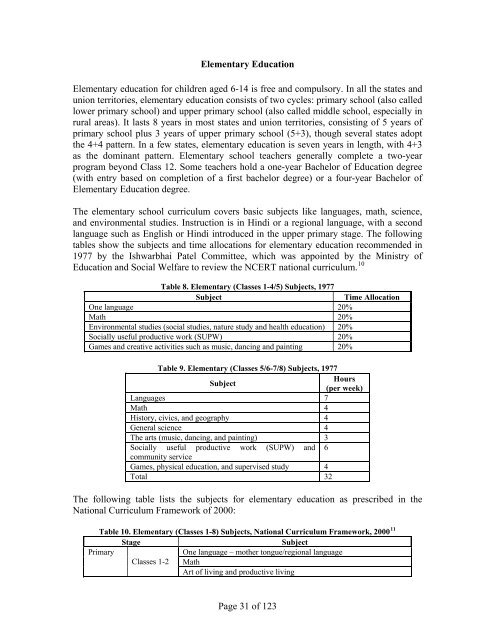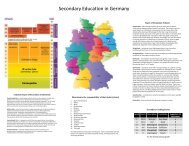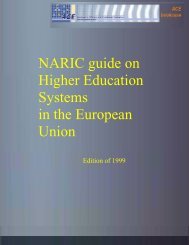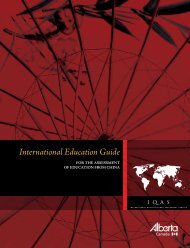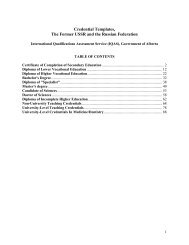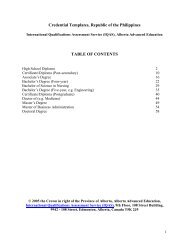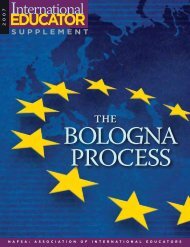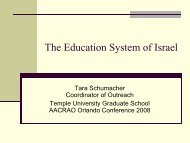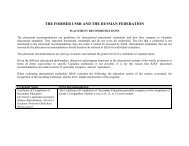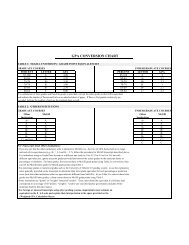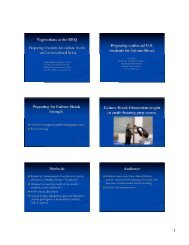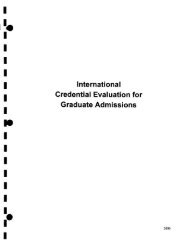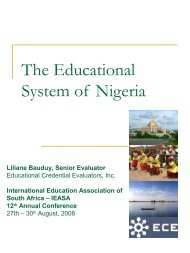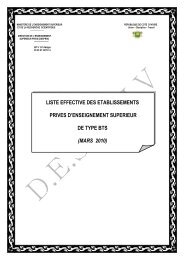International Qualifications Assessment Service (IQAS) - Shelby ...
International Qualifications Assessment Service (IQAS) - Shelby ...
International Qualifications Assessment Service (IQAS) - Shelby ...
Create successful ePaper yourself
Turn your PDF publications into a flip-book with our unique Google optimized e-Paper software.
Elementary Education<br />
Elementary education for children aged 6-14 is free and compulsory.<br />
In all the states and<br />
union<br />
territories, elementary education consists of two cycles: primary school (also called<br />
lower primary school) and upper primary school (also called middle school, especially in<br />
rural areas). It lasts 8 years in most states and union territories, consisting of 5 years of<br />
primary school plus 3 years of upper primary school (5+3), though several states adopt<br />
the 4+4 pattern. In a few states, elementary education is seven years in length, with 4+3<br />
as the dominant pattern. Elementary school teachers generally complete a two-year<br />
program beyond Class 12. Some teachers hold a one-year Bachelor of Education degree<br />
(with entry based on completion of a first bachelor degree) or a four-year Bachelor of<br />
Elementary Education degree.<br />
The elementary school curriculum covers basic subjects like languages, math, science,<br />
and<br />
environmental studies. Instruction is in Hindi or a regional language, with a second<br />
language such as English or Hindi introduced in the upper primary stage. The following<br />
tables show the subjects and time allocations for elementary education recommended in<br />
1977 by the Ishwarbhai Patel Committee, which was appointed by the Ministry of<br />
Education and Social Welfare to review the NCERT national curriculum. 10<br />
Table 8. Elementary (Classes 1-4/5) Subjects, 1977<br />
Subject Time Allocation<br />
One language 20%<br />
Math 20%<br />
Environmental studies (social studies, nature study and health education) 20%<br />
Socially useful productive work (SUPW) 20%<br />
Games and creative activities such as music, dancing and painting 20%<br />
Table 9. Elementary (Classes 5/6-7/8) Subjects, 1977<br />
Subject<br />
Hours<br />
(per week)<br />
Languages 7<br />
Math 4<br />
History, civics, and geography 4<br />
General science 4<br />
The arts (music, dancing, and painting) 3<br />
Socially useful productive work (SUPW) and 6<br />
community service<br />
Games, physical education, and supervised study 4<br />
Total 32<br />
The following table lists the subjects for elementary education as prescribed in the<br />
National<br />
Curriculum Framework of 2000:<br />
cts, National Curriculum Framework, 2000 11<br />
Table 10. Elementary (Classes 1-8) Subje<br />
Stage Subject<br />
Primary<br />
One language – mother tongue/regional language<br />
Classes<br />
1-2 Math<br />
Art of living and productive living<br />
Page 31 of 123


